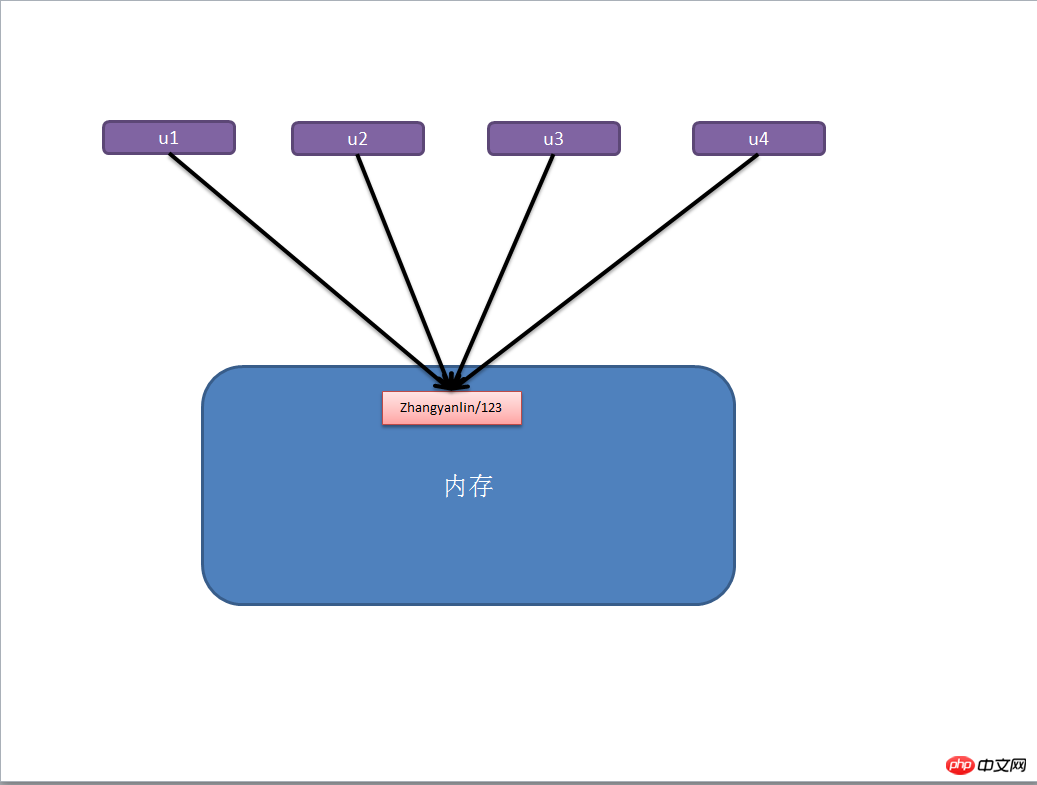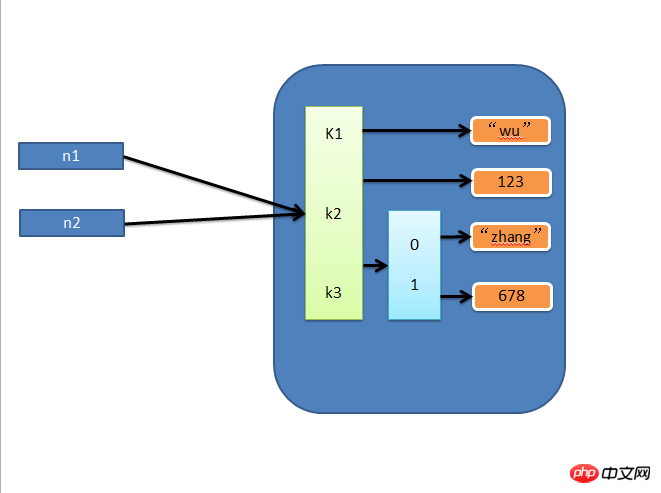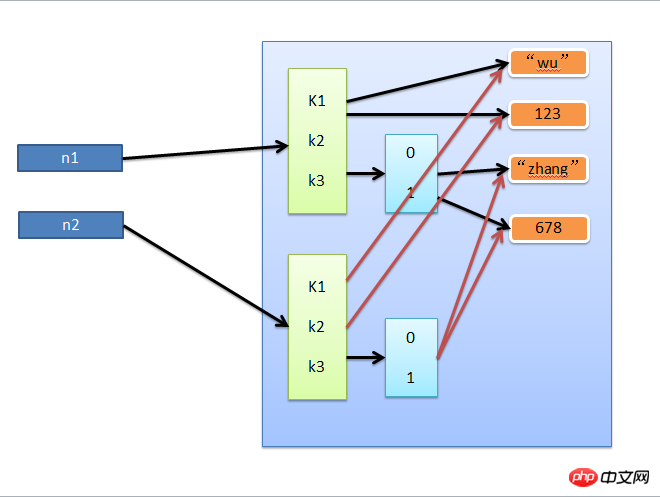Python常用知識點
1、Set基本資料型別
a、set集合,是一個無序且不重複的元素集合
##
class set(object):
"""
set() -> new empty set object
set(iterable) -> new set object
Build an unordered collection of unique elements.
"""
def add(self, *args, **kwargs): # real signature unknown
"""
Add an element to a set,添加元素
This has no effect if the element is already present.
"""
pass
def clear(self, *args, **kwargs): # real signature unknown
""" Remove all elements from this set. 清楚内容"""
pass
def copy(self, *args, **kwargs): # real signature unknown
""" Return a shallow copy of a set. 浅拷贝 """
pass
def difference(self, *args, **kwargs): # real signature unknown
"""
Return the difference of two or more sets as a new set. A中存在,B中不存在
(i.e. all elements that are in this set but not the others.)
"""
pass
def difference_update(self, *args, **kwargs): # real signature unknown
""" Remove all elements of another set from this set. 从当前集合中删除和B中相同的元素"""
pass
def discard(self, *args, **kwargs): # real signature unknown
"""
Remove an element from a set if it is a member.
If the element is not a member, do nothing. 移除指定元素,不存在不保错
"""
pass
def intersection(self, *args, **kwargs): # real signature unknown
"""
Return the intersection of two sets as a new set. 交集
(i.e. all elements that are in both sets.)
"""
pass
def intersection_update(self, *args, **kwargs): # real signature unknown
""" Update a set with the intersection of itself and another. 取交集并更更新到A中 """
pass
def isdisjoint(self, *args, **kwargs): # real signature unknown
""" Return True if two sets have a null intersection. 如果没有交集,返回True,否则返回False"""
pass
def issubset(self, *args, **kwargs): # real signature unknown
""" Report whether another set contains this set. 是否是子序列"""
pass
def issuperset(self, *args, **kwargs): # real signature unknown
""" Report whether this set contains another set. 是否是父序列"""
pass
def pop(self, *args, **kwargs): # real signature unknown
"""
Remove and return an arbitrary set element.
Raises KeyError if the set is empty. 移除元素
"""
pass
def remove(self, *args, **kwargs): # real signature unknown
"""
Remove an element from a set; it must be a member.
If the element is not a member, raise a KeyError. 移除指定元素,不存在保错
"""
pass
def symmetric_difference(self, *args, **kwargs): # real signature unknown
"""
Return the symmetric difference of two sets as a new set. 对称交集
(i.e. all elements that are in exactly one of the sets.)
"""
pass
def symmetric_difference_update(self, *args, **kwargs): # real signature unknown
""" Update a set with the symmetric difference of itself and another. 对称交集,并更新到a中 """
pass
def union(self, *args, **kwargs): # real signature unknown
"""
Return the union of sets as a new set. 并集
(i.e. all elements that are in either set.)
"""
pass
def update(self, *args, **kwargs): # real signature unknown
""" Update a set with the union of itself and others. 更新 """
passse = {11,22,33,44,55}
be = {44,55,66,77,88}
# se.add(66)
# print(se) #添加元素,不能直接打印!
#
#
#
# se.clear()
# print(se) #清除se集合里面所有的值,不能清除单个
#
#
#
# ce=be.difference(se) #se中存在,be中不存在的值,必须赋值给一个新的变量
# print(ce)
#
#
# se.difference_update(be)
# print(se) #在se中删除和be相同的值,不能赋值给一个新的变量,先输入转换,然后打印,也不能直接打印!
# se.discard(11)
# print(se) #移除指定元素,移除不存在的时候,不会报错
# se.remove(11)
# print(se) #移除指定的元素,移除不存在的会报错
# se.pop()
# print(se) #移除随机的元素
#
#
# ret=se.pop()
# print(ret) #移除元素,并且可以把移除的元素赋值给另一个变量
# ce = se.intersection(be)
# print(ce) #取出两个集合的交集(相同的元素)
# se.intersection_update(be)
# print(se) #取出两个集合的交集,并更新到se集合中
# ret = se.isdisjoint(be)
# print(ret) #判断两个集合之间又没有交集,如果有交集返回False,没有返回True
# ret=se.issubset(be)
# print(ret) #判断se是否是be集合的子序列,如果是返回True,不是返回Flase
# ret = se.issuperset(be)
# print(ret) #判断se是不是be集合的父序列,如果是返回True,不是返回Flase
# ret=se.symmetric_difference(be)
# print(ret) #对称交集,取出除了不相同的元素
# se.symmetric_difference_update(be)
# print(se) #对称交集,取出不相同的元素并更新到se集合中
# ret = se.union(be)
# print(ret) #并集,把两个元素集合并在一个新的变量中#2、深淺拷貝

 對於數字和字串而言,賦值、淺拷貝和深拷貝無意義,因為其永遠指向同一個記憶體位址。
對於數字和字串而言,賦值、淺拷貝和深拷貝無意義,因為其永遠指向同一個記憶體位址。
import copy # ######### 数字、字符串 ######### n1 = 123 # n1 = "i am alex age 10" print(id(n1)) # ## 赋值 ## n2 = n1 print(id(n2)) # ## 浅拷贝 ## n2 = copy.copy(n1) print(id(n2)) # ## 深拷贝 ## n3 = copy.deepcopy(n1) print(id(n3))
 賦值,只是建立一個變量,該變數指向原來記憶體位址,如:
賦值,只是建立一個變量,該變數指向原來記憶體位址,如:
n1 = {"k1": "zhangyanlin", "k2": 123, "k3": ["Aylin", 456]}
n2 = n1
##2、淺拷貝
import copy
n1 = {"k1": "zhangyanlin", "k2": 123, "k3": ["aylin", 456]}
n3 = copy.copy(n1)3、深拷貝
深拷貝,在記憶體中將所有的資料重新建立一份(排除最後一層,即:python內部對字串和數字的最佳化)
3、函數
函數式:將某功能程式碼封裝到函數中,日後便無需重複編寫,僅調用函數即可
物件導向:對函數進行分類和封裝,讓開發「更快更好更強....函數的定義主要有以下要點:
def:表示函數的關鍵字
函數名稱:函數的名稱,日後根據函數名稱呼叫函數
函數體:函數中進行一系列的邏輯計算,如:發送郵件、計算出[11,22,38,888, 2]中的最大數等...
參數:為函數體提供資料
傳回值:當函數執行完畢後,可以給呼叫者回傳資料。傳回值
函數是一個功能塊,該功能到底執行成功與否,需要透過傳回值來告知呼叫者。
##
def 发送短信():
发送短信的代码...
if 发送成功:
return True
else:
return False
while True:
# 每次执行发送短信函数,都会将返回值自动赋值给result
# 之后,可以根据result来写日志,或重发等操作
result = 发送短信()
if result == False:
短信发送失败...
普通參數
#定義函數
# name 叫做函數func的形式參數,簡稱:形參
print name
## 執行函數# 'zhangyanlin' 稱為函數func的實際參數,簡稱:實參func('zhangyanlin')
預設參數
def func(name, age = 18):
print "%s:%s" %(name,age)
# 指定參數
func('zhangyanlin', 19)
func('nick')
:預設參數需要放在參數清單最後
def func(*args): print args # 执行方式一 func(11,33,4,4454,5) # 执行方式二 li = [11,2,2,3,3,4,54] func(*li)
def func(**kwargs):
print args
# 执行方式一
func(name='wupeiqi',age=18)
# 执行方式二
li = {'name':'wupeiqi', age:18, 'gender':'male'}
func(**li)def func(*args, **kwargs): print args print kwargs
def email(p,j,k):
import smtplib
from email.mime.text import MIMEText
from email.utils import formataddr
set = True
try:
msg = MIMEText('j', 'plain', 'utf-8') #j 邮件内容
msg['From'] = formataddr(["武沛齐",'wptawy@126.com'])
msg['To'] = formataddr(["走人",'424662508@qq.com'])
msg['Subject'] = "k" #k主题
server = smtplib.SMTP("smtp.126.com", 25)
server.login("wptawy@126.com", "WW.3945.59")
server.sendmail('wptawy@126.com', [p], msg.as_string())
server.quit()
except:
set = False
return True
formmail = input("请你输入收件人邮箱:")
zhuti = input("请您输入邮件主题:")
neirong = input("请您输入邮件内容:")
aa=email(formmail,neirong,zhuti)
if aa:
print("邮件发送成功!")
else:
print("邮件发送失败!")
熱AI工具

Undresser.AI Undress
人工智慧驅動的應用程序,用於創建逼真的裸體照片

AI Clothes Remover
用於從照片中去除衣服的線上人工智慧工具。

Undress AI Tool
免費脫衣圖片

Clothoff.io
AI脫衣器

Video Face Swap
使用我們完全免費的人工智慧換臉工具,輕鬆在任何影片中換臉!

熱門文章

熱工具

記事本++7.3.1
好用且免費的程式碼編輯器

SublimeText3漢化版
中文版,非常好用

禪工作室 13.0.1
強大的PHP整合開發環境

Dreamweaver CS6
視覺化網頁開發工具

SublimeText3 Mac版
神級程式碼編輯軟體(SublimeText3)
 Python vs.C:申請和用例
Apr 12, 2025 am 12:01 AM
Python vs.C:申請和用例
Apr 12, 2025 am 12:01 AM
Python适合数据科学、Web开发和自动化任务,而C 适用于系统编程、游戏开发和嵌入式系统。Python以简洁和强大的生态系统著称,C 则以高性能和底层控制能力闻名。
 Python:遊戲,Guis等
Apr 13, 2025 am 12:14 AM
Python:遊戲,Guis等
Apr 13, 2025 am 12:14 AM
Python在遊戲和GUI開發中表現出色。 1)遊戲開發使用Pygame,提供繪圖、音頻等功能,適合創建2D遊戲。 2)GUI開發可選擇Tkinter或PyQt,Tkinter簡單易用,PyQt功能豐富,適合專業開發。
 Python與C:學習曲線和易用性
Apr 19, 2025 am 12:20 AM
Python與C:學習曲線和易用性
Apr 19, 2025 am 12:20 AM
Python更易學且易用,C 則更強大但複雜。 1.Python語法簡潔,適合初學者,動態類型和自動內存管理使其易用,但可能導致運行時錯誤。 2.C 提供低級控制和高級特性,適合高性能應用,但學習門檻高,需手動管理內存和類型安全。
 Python和時間:充分利用您的學習時間
Apr 14, 2025 am 12:02 AM
Python和時間:充分利用您的學習時間
Apr 14, 2025 am 12:02 AM
要在有限的時間內最大化學習Python的效率,可以使用Python的datetime、time和schedule模塊。 1.datetime模塊用於記錄和規劃學習時間。 2.time模塊幫助設置學習和休息時間。 3.schedule模塊自動化安排每週學習任務。
 Python vs.C:探索性能和效率
Apr 18, 2025 am 12:20 AM
Python vs.C:探索性能和效率
Apr 18, 2025 am 12:20 AM
Python在開發效率上優於C ,但C 在執行性能上更高。 1.Python的簡潔語法和豐富庫提高開發效率。 2.C 的編譯型特性和硬件控制提升執行性能。選擇時需根據項目需求權衡開發速度與執行效率。
 學習Python:2小時的每日學習是否足夠?
Apr 18, 2025 am 12:22 AM
學習Python:2小時的每日學習是否足夠?
Apr 18, 2025 am 12:22 AM
每天學習Python兩個小時是否足夠?這取決於你的目標和學習方法。 1)制定清晰的學習計劃,2)選擇合適的學習資源和方法,3)動手實踐和復習鞏固,可以在這段時間內逐步掌握Python的基本知識和高級功能。
 Python:自動化,腳本和任務管理
Apr 16, 2025 am 12:14 AM
Python:自動化,腳本和任務管理
Apr 16, 2025 am 12:14 AM
Python在自動化、腳本編寫和任務管理中表現出色。 1)自動化:通過標準庫如os、shutil實現文件備份。 2)腳本編寫:使用psutil庫監控系統資源。 3)任務管理:利用schedule庫調度任務。 Python的易用性和豐富庫支持使其在這些領域中成為首選工具。
 Python標準庫的哪一部分是:列表或數組?
Apr 27, 2025 am 12:03 AM
Python標準庫的哪一部分是:列表或數組?
Apr 27, 2025 am 12:03 AM
pythonlistsarepartofthestAndArdLibrary,herilearRaysarenot.listsarebuilt-In,多功能,和Rused ForStoringCollections,而EasaraySaraySaraySaraysaraySaraySaraysaraySaraysarrayModuleandleandleandlesscommonlyusedDduetolimitedFunctionalityFunctionalityFunctionality。






